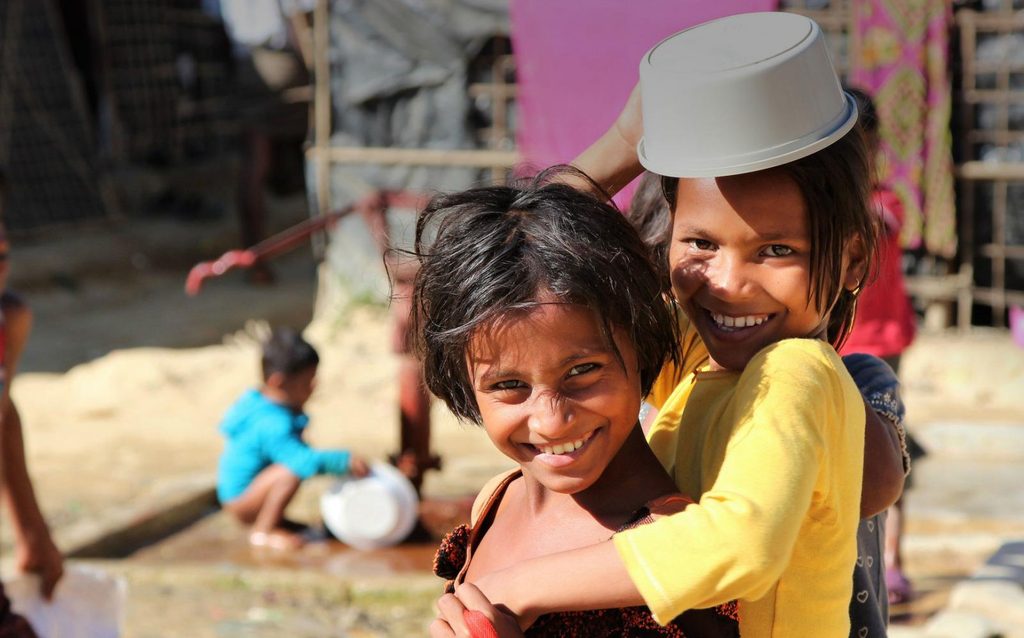2 JULY 2018
Rohingya girls tell us their hopes, fears and needs.

Almost a million Rohingya people have been forced to flee violence and persecution in Myanmar. Half of them are children. These refugees now live in camps in Cox’s Bazar in neighbouring Bangladesh.
Conditions in the camp are poor. Shelters are described as sweltering, and often girls are not allowed or don’t feel able to leave them for safety reasons.
Despite the number of adolescent girls affected by this crisis, it is rare that their specific needs are identified or addressed. Plan International has made an attempt to rectify this, by talking to girls and listening to their suggestions for improving conditions in the camp.
Here’s what they told us.
“Everyone is unknown in the camp. All of my friends became separated when we were running to cross the river. As girls, we have to find a leafy place to take a bath, away from the eyes of men. We have to wait until the night comes to relieve ourselves.”
– Gulzar, 10
Girls want to feel safe
Girls frequently feel unsafe in the camps. They struggle with everyday activities such as bathing and going to the toilet because of the lack of privacy.
Rekha, 17, told us how she feels as a girl in the camp.
In emergency situations, girls have unique needs that are often overlooked. Girls who have limited access to food and water are even less likely to be able to manage their periods in a dignified and healthy way.
“I feel shy and nervous when so many men stare, all unknown to me. Like many others, we used to live in camp areas in Mongdu, Myanmar. Girls used to get cotton during menstruation. In this new place, we now use old clothes.”
– Solema, 12
Girls want freedom from isolation
Parents in the camp say they worry more about the daughters’ safety. It’s clear that pre-existing ideas about gender roles play a part in the decision to keep their daughters at home.
Over 75% of girls we interviewed reported having no ability to make decisions about their own lives. Many expressed a desire for greater freedom.
“In Myanmar I had friends and went to school. I was really interested to learn English and tailoring. But there’s no school here. Education is something that is great, I want to attend school.”
“I used to play with my friends picking mangos, it was fun. I can’t play here because there’s no space in the camp. In Myanmar, if I wanted to play, I could, but I can’t play here.”
– Noor, 11
Girls want an education.
Only 28% of girls interviewed reported attending schooling of any kind, yet girls of all ages expressed a desire to study and disappointment that their current situation prevents study. For Rohingya girls, education is a way to improve both their present lives and their future opportunities.
Despite these concerns, girls reported feeling safer than they did in Myanmar where the threat of violence and persecution was even greater. Almost two-thirds of girls said they feel OK or happy most days.
“We were afraid of the police and military in Burma. We did not feel safe there because they beat us and penalised us if we used to move in the night time. But we are not afraid here,” said one 16 year old girl interviewed.
Rohingya girls have spoken. These are there needs.
Rohingya girls have expressed a need for great safety and freedom. Safe spaces are needed in the camp so girls can leave the sweltering tents and access proper sanitation facilities without feeling at risk.
Girls have also expressed a desire to access education. It’s vital that Rohingya girls’ prospects are not further hindered by a lack of opportunity to study and build their skills.
Girls in emergency situations deserve to feel safe and have a right to education just like any other young person.
Categories: Emergencies


